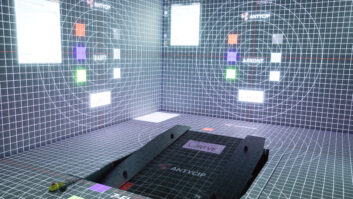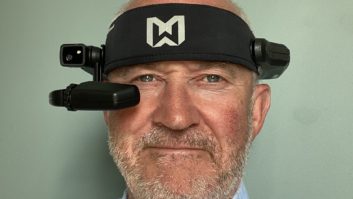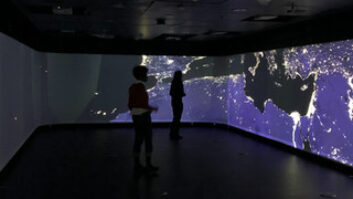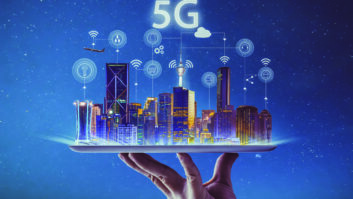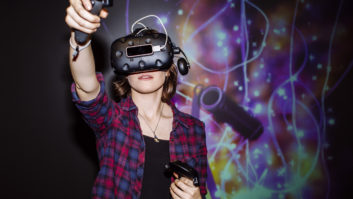Augmented reality remains something of a novelty, but things are set to change, says our columnist Rob Lane.
Almost year ago, I reported on how AR, while a lot of fun, was struggling to grow from its fun, experiential beginnings. So, 12 months on, have things progressed?
In case you’ve been living in a cave, AR can be described as augmenting and enhancing the real world with additional layers of digital information (usually less than 25%, proportionately), typically via tablets, smartphones and increasingly VR goggles, where AR meets VR – so-called mixed reality. AR can either be 2D, with labels or infographics appearing on top of the real world, or 3D where objects are placed into real-world scenes.
So far so fun, but until now AR hasn’t really given integrators much to work with. There are only so many insides of a car you can view with an iPad before getting tech fatigue. Even marketing gurus have struggled to come up with many applications.
One groundbreaking marketing campaign was recently showcased by Pepsi, on a bus shelter in London – demonstrating how AR could be set to revolutionise print and billboard advertising. Pepsi’s Unbelievable Bus Shelter utilised AR in a way not seen before, with lions appearing to run towards the shelter, giant robots and various other augmented surprises.
For the installation industry, of course, there’s room for the practical and the playful – depending on the nature of the installation – but again, AR is yet to make a sizable impact, perhaps due to the restrictions imposed by the size and impracticalities of tablet and smartphone, the AR developers’ weapons of choice.
This could all be set to change. Microsoft, Google and Facebook are all currently ramping up their AR smarts, and the likes of Sony (with its developer pre-order of SmartEyeGlass), HTS and Samsung are also coming to the fore. HoloLens, Google Glass 2 (and the Google-backed Magic Leap – more later) and the next-gen Oculus Rift will all add AR to their armoury, providing developers with more tools for their virtual sandbox and providing integrators with more sophisticated ways of adding AR to their offer.
Google has applied to the US Patent and Trademark Office for a new technology set to allow users to get information regarding objects within their line of sight – AR, in other words. Google Glass was always an AR tool, of course, but it sounds as if Google is looking to turn up the dial for its second-generation product.
Microsoft has been making a big play for AR, as part of its HoloLens headset offering (supposedly shipping to developers in the next 12 months). Interestingly, the company has been careful to distance HoloLens from being categorised as either VR and AR, preferring to use the phrase ‘mixed reality’, and ‘hologram’ – although it’s debatable whether or not seeing things floating before your eyes when wearing VR goggles is holographic.
However, this tactic has certainly cemented HoloLens as the augmented reality VR goggles, which probably explains Facebook and Google pushing their own AR functionality.
Microsoft recently released a video revealing what it will be like to wear HoloLens, using its partnership with Case Western Reserve University (CWRU) in Ohio as a showcase for the technology and, in particular, its AR aspirations. It is said to be transforming the way human anatomy is taught to doctors, with the video showing medical students wearing HoloLens viewing the various layers of the human body.
It has been reported that a second Oculus Rift product is being developed by Facebook, also offering mixed reality. Developed with help from Leap Motion, the new device will apparently be able to display content in 3D and in 360º, as a ‘manipulative hologram’ (there’s that word again!). Users will be able to create their own digital workspace and operate it in mid (virtual) air. So perhaps more ‘responsive AR’ than ‘manipulative hologram’, but it’s only semantics.
Google is working with Qualcomm and film production company Legendary Entertainment on secretive start-up Magic Leap (which released a fun video showcasing some of its possibilities earlier this year). The three companies have pumped $542 million into Magic Leap, which recently allowed developers to sign up to its forthcoming SDK with this enticing blurb: “Imagine being able to generate images indistinguishable from real objects and then being able to place those images seamlessly into the real world…” Certainly sounds like AR!
So, the future looks rosy for AR, and developers and integrators should reap the benefits going forward. According to B2B News Network, Tim Merel, MD at leading AR advisory firm Digi-Capital, AR is set to spawn “a host of uses nobody has thought of yet” and forecasts $150 billion revenue for VR/AR by 2020, with AR-based business bagging around $120 billion of the total. Hopefully this will lead to augmented profits for all…
